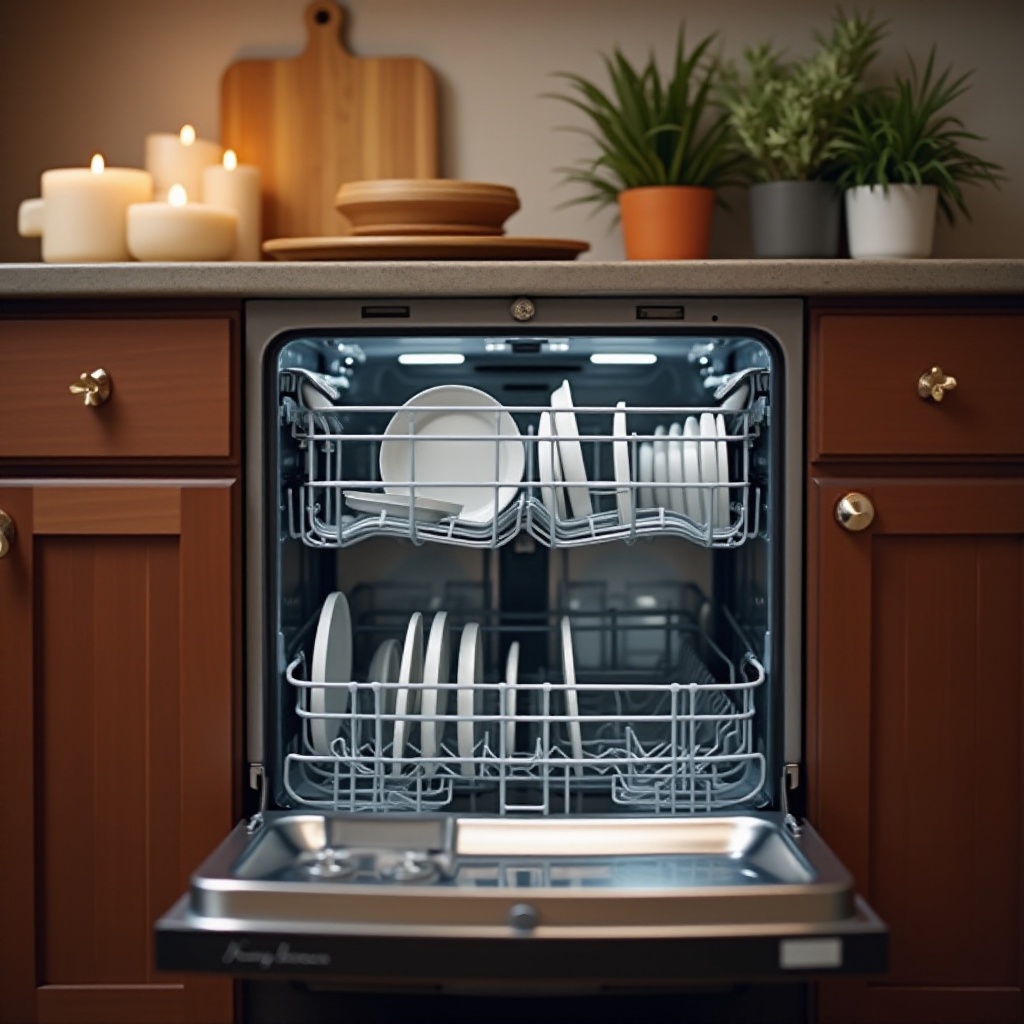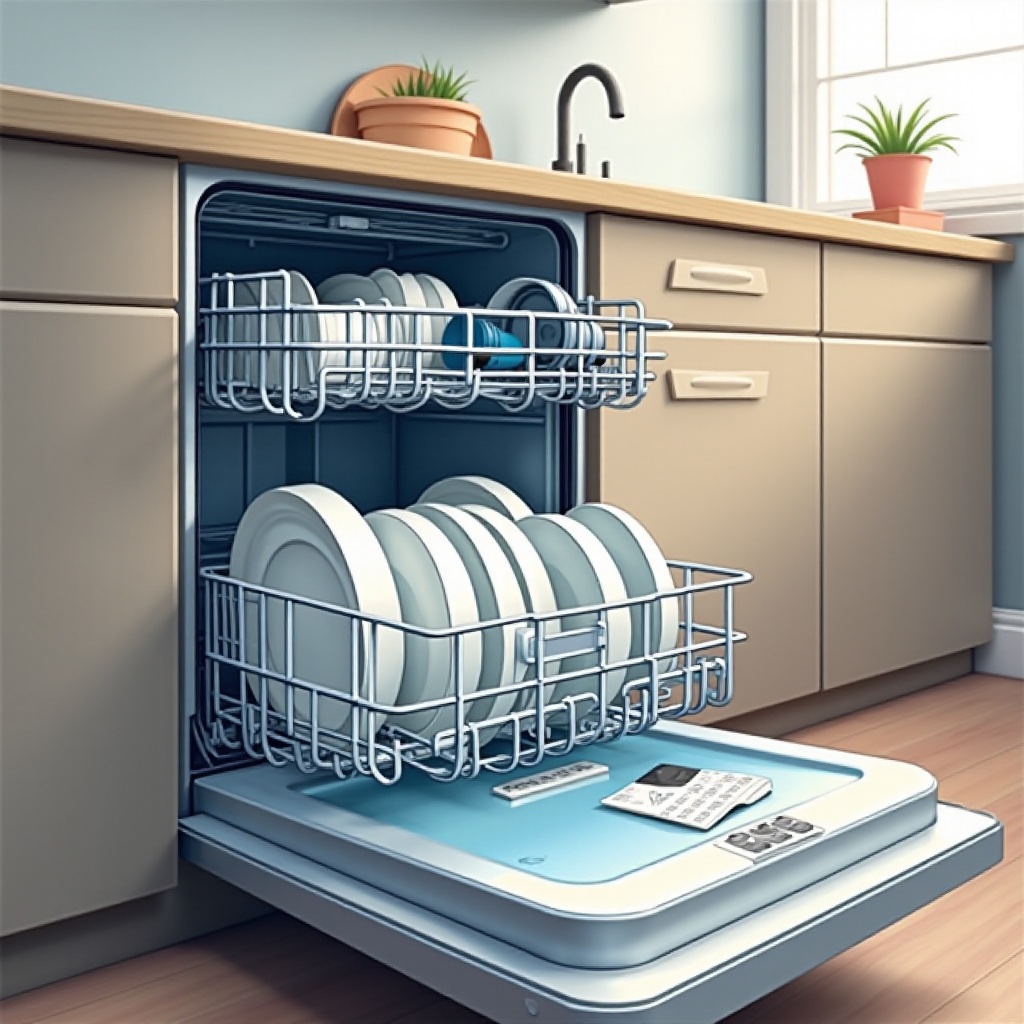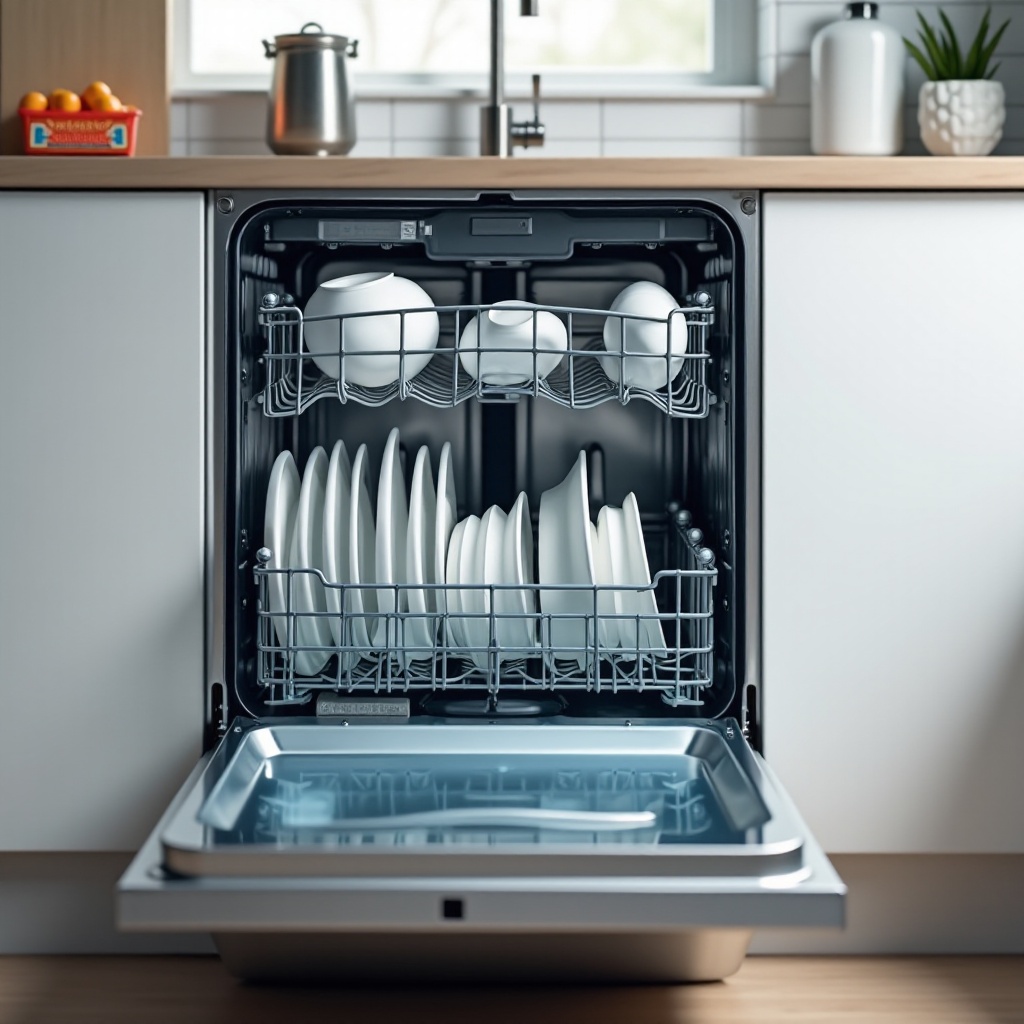Introduction
Experiencing a dishwasher that fills with water but doesn't continue to wash is a common household issue. This scenario can be particularly exasperating as it halts your kitchen cleaning cycle and requires immediate attention. Knowing how a dishwasher operates can help you pinpoint potential missteps in its cycle, empowering you to restore its functionality. This guide will explore normal dishwasher operations and delve into why yours may not be washing effectively.

How a Dishwasher Normally Operates
A dishwasher is designed to clean your dishes efficiently by following a series of automated steps. Understanding these steps and components can help in diagnosing problems:
Overview of Dishwasher Cycles: The cleaning process begins when water fills the dishwasher's tub, activating the pump which sprays water through the arms to clean dishes. Detergent is released during this phase to break down food residues. After washing, the dishwasher drains, refills with fresh water, and continues to rinse the dishes.
Essential Components in Operation: Key components include the wash pump, which is vital for circulating water; spray arms that direct water flow; and the water inlet valve that regulates the water filling the unit. A float switch helps control water levels to prevent overfilling. When these work in harmony, they ensure your dishes come out sparkling clean.
Understanding these operations helps you identify what might be wrong when the washing phase doesn't start.
Common Reasons Your Dishwasher Isn’t Washing
If your dishwasher fills with water but doesn't wash, a few usual suspects might be to blame. Let's examine these potential problems:
Clogged Spray Arms: It's not uncommon for spray arms to become blocked by food particles or limescale, preventing water from reaching dishes.
Faulty Water Inlet Valve: If the valve is defective, it might not let in enough water pressure, impacting the effectiveness of the wash cycle.
Malfunctioning Wash Motor: An ineffective wash motor can lead to inadequate water movement, meaning dishes remain unwashed despite water in the tub.
Recognizing these issues helps in deciding what steps you need to take next.
Step-by-Step Troubleshooting Guide
Once you've identified possible causes, follow these steps to troubleshoot:
- Inspecting and Cleaning Spray Arms:
Detach spray arms and clean under running water to remove debris. Use a soft brush to get rid of clogs.
Testing the Water Inlet Valve:
Turn off the water and power to your dishwasher. Access the valve, typically located at the back or bottom, and test continuity with a multimeter. Replace if necessary.
Evaluating the Wash Motor:
- Listen for unusual sounds during operation, indicating motor trouble. Refer to your dishwasher's service manual to test and consider a professional inspection if needed.
By methodically following these steps, you can often pinpoint and resolve issues that prevent your dishwasher from completing its wash cycle.

DIY Fixes for Common Issues
Now that you've investigated the likely problems, how do you solve them?
Cleaning Techniques: Regularly unclog spray arms and clean filters to avoid future washing failures. Use vinegar or dishwasher cleaning solutions monthly to reduce build-up.
Component Replacement Tips: Replace worn parts like a faulty inlet valve with recommended replacements to ensure proper operation. Always follow manufacturer instructions for replacement parts.
Addressing these minor details can significantly boost your dishwasher's performance and lifespan.
When to Consult a Professional Technician
While many problems can be fixed at home, some may need expert evaluation:
Recognizing Complex Problems: If issues persist after trying these solutions or involve complex electrical systems, a professional technician can offer a safer, more comprehensive diagnosis.
Evaluating Costs of Repairs: Weigh the cost of fixing versus replacing the dishwasher, especially if it is nearing the end of its lifespan. Investing in a new, energy-efficient model could save money in the long run.
Knowing when to seek professional help will ensure safety and efficient operation.
Preventive Maintenance Tips
Preventive care can keep your dishwasher running smoothly and help avoid costly repairs:
Regular Cleaning Schedule: Cleaning filters, spray arms, and interior walls weekly can prevent clogs and mineral deposits.
Proper Detergent Use: Using the right amount and type of detergent is crucial to prevent residue build-up that impairs performance.
Periodic Component Checks: Routinely check hoses, seals, and spray arms for wear, and replace parts before they fail.
Implementing these maintenance practices can help maintain the efficiency and longevity of your dishwasher.

Conclusion
A dishwasher that fills with water but fails to wash requires immediate attention to restore your kitchen's efficiency. By understanding how your appliance works, identifying common issues, and taking preventive measures, you can keep your machine running smoothly, ensuring your dishes are always clean and ready for use.
Frequently Asked Questions
What if my dishwasher still doesn't wash after troubleshooting?
If troubleshooting steps fail, check for additional issues like electrical problems or faulty sensors. It might be time to call a professional for a thorough inspection.
How can I prevent my dishwasher from clogging?
Regularly clean filters, spray arms, and ensure no build-up blocks water pathways. Rinse dishes before loading to minimize debris entering the system.
Is it worth fixing an old dishwasher?
Consider the age and condition of the dishwasher. If repair costs approach the price of a new model, investing in an updated version might offer long-term savings and improved efficiency.
